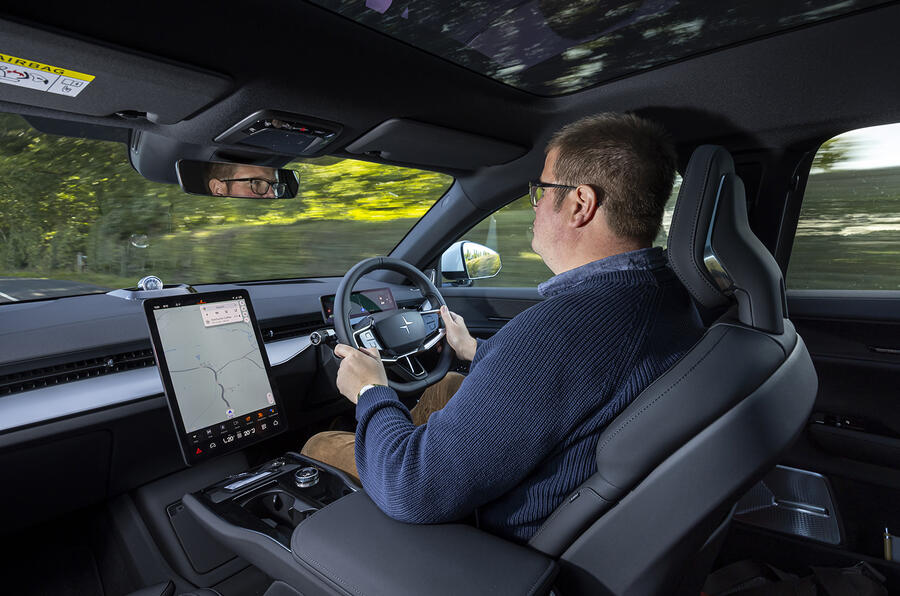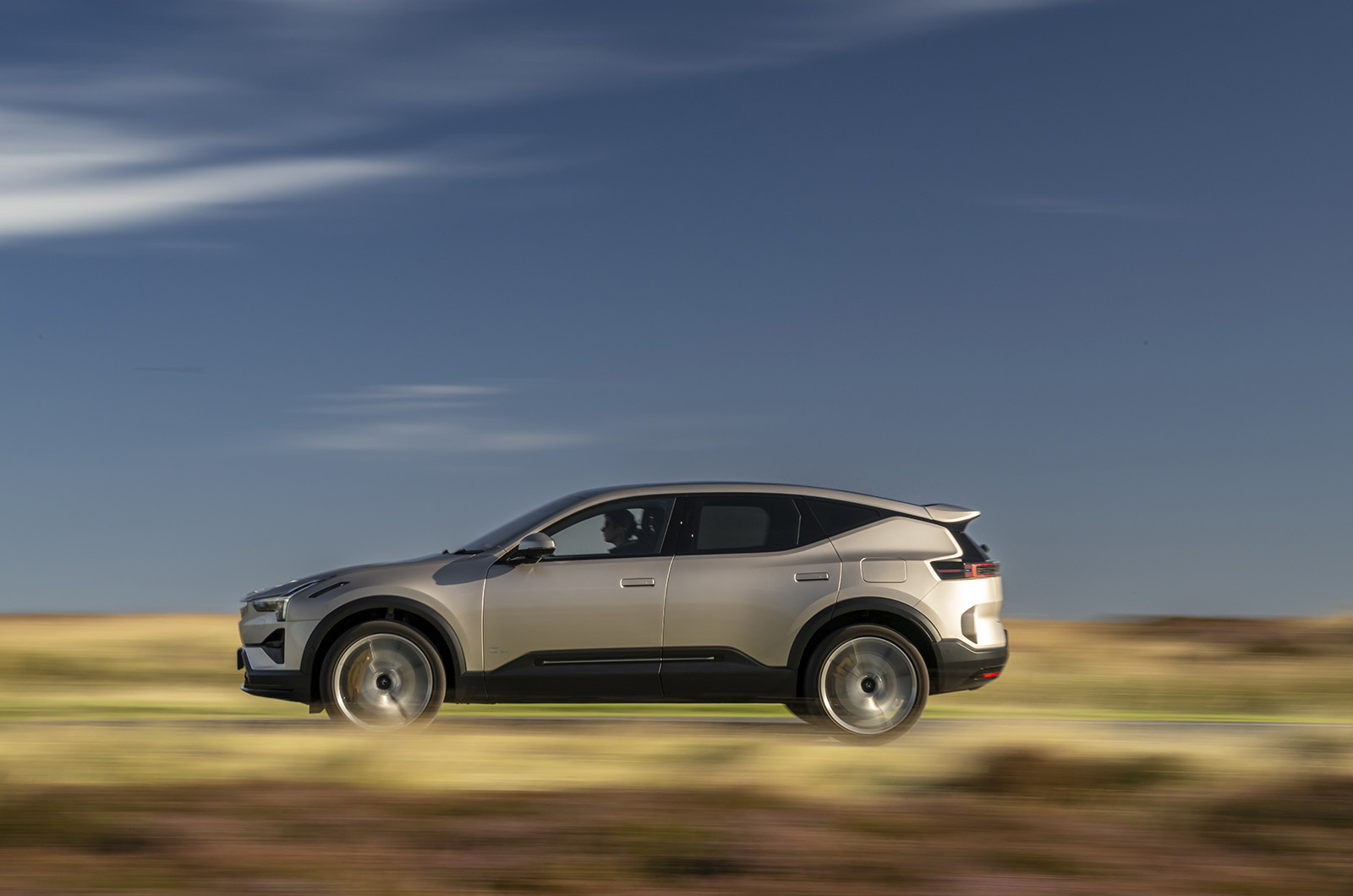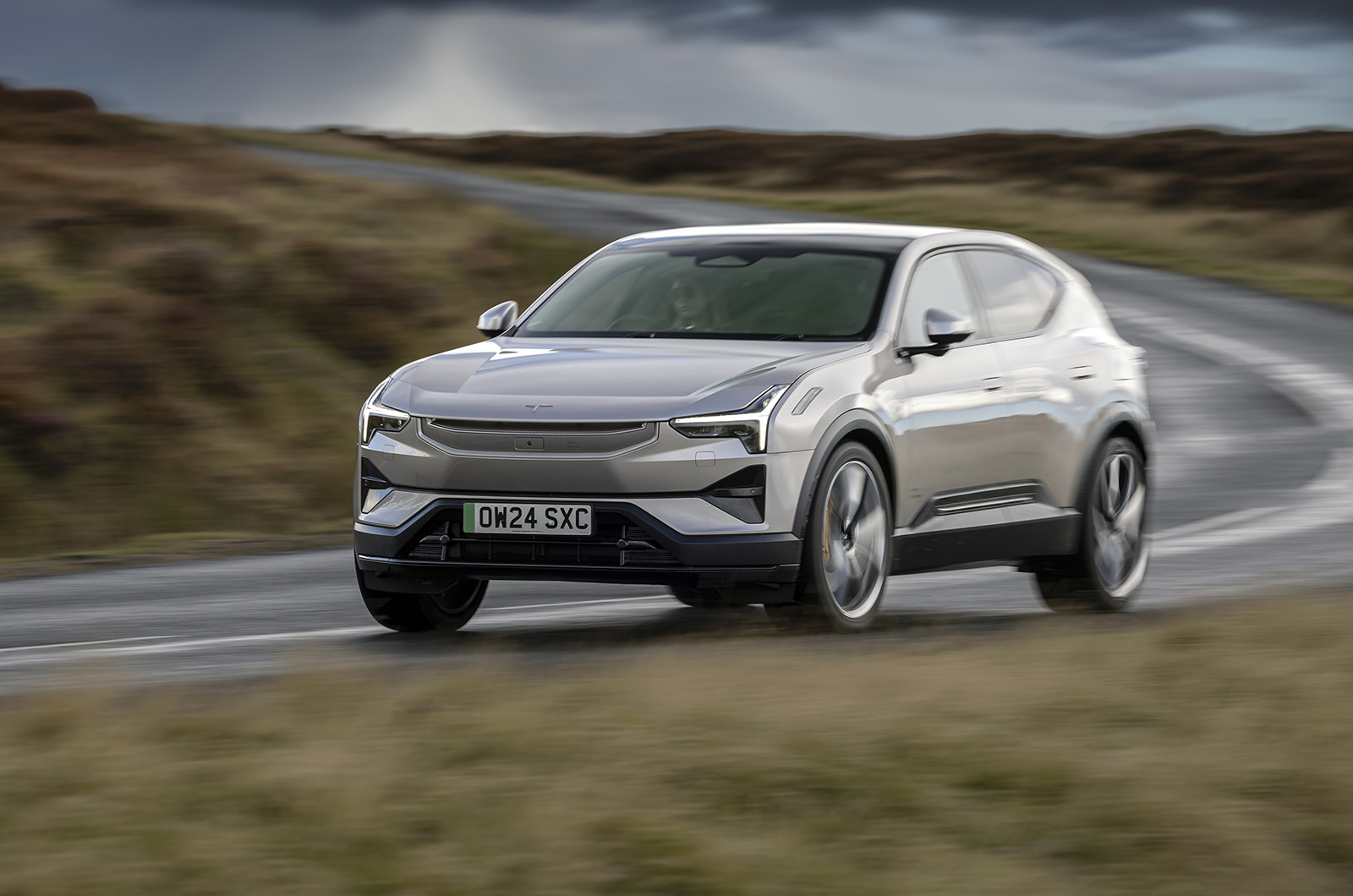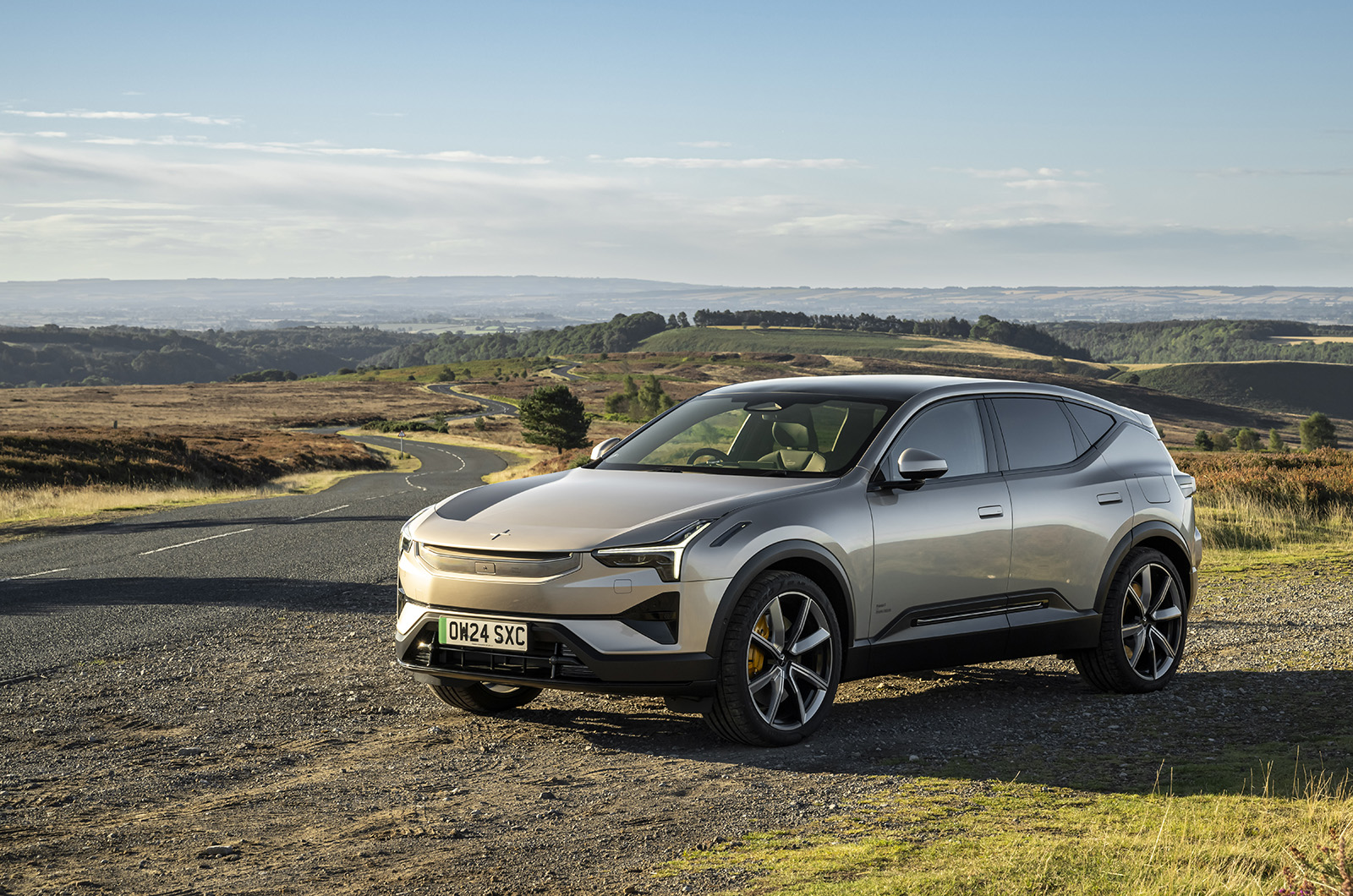On the inside, only the high cabin floor you so commonly find in EVs adversely affects passenger comfort here - and only in the second row. This isn’t a car you climb up into like a Range Rover; nor one you sit particularly upright within. It has the medium-high vantage point of a mid-sized SUV, but the sense of expansive onboard width and space of something bigger - and the lowered roofline doesn’t leave headroom wanting.
Up front, you’re greeted by a double-decker dash design, complete with a recessed vent line that runs the full width; and recycled but expensive textiles, with some subtle chrome and expensive trim touches. It’s straightforward but also oozes that classically understated, airy, Scandinavian feel.
Just like the Volvo EX90, the Polestar 3 is a car armed to improve with every software update, with digital tech capacity in reserve. It comes with radar transceivers in its cabin that can detect sub-millimetre movements, so the car can warn you before leaving a pet or child locked inside; and also use its climate control system to keep them warm or cool. You can get it with LiDAR ADAS sensing, too, and 25-speaker surround audio.
A compact digital readout behind the steering wheel gives you speed and range, and there’s a head-up display as part of the £5000 Plus Pack, if you want it. Then, of course, there’s a huge touchscreen as well, which is your window to the climate control, inbuilt sat-nav (with Google Maps), wireless Apple CarPlay and Android Auto and more.
The 14.5in portrait-orientated multimedia screen has a lot to do; just like in the Volvo EX30 and -90, a few too many physical controls have migrated to it, some of them potentially safety-influencing (fog lamp controls, mirror adjustment) - and there aren’t enough physical ADAS controls, either. The net result can all be dismayingly distracting and fiddly to interact with; but the rest of the Polestar 3’s interior is certainly impressive, the cabin decor having a slightly understated but pervading sense of material quality about it.
The driving position is great, barring the steering wheel needing to drop a touch lower, and space isn’t likely to be an issue either. That high floor admitted, rear passenger room is impressive. The clever roofline design means that even tall passengers have loads of head room even below a standard glass roof.
Boot space is good too. The sloping roofline does make it a bit shallow towards the back of the car, but the 484-litre space (accessed through a usefully large hatch aperture) is decent, with a nifty boot floor that folds up to split the load space and gives you something to strap your groceries securely to (as we have seen in various Volvos). Meanwhile, the small ‘frunk’ is good for storing a single charging cable under the car's bonnet.












































